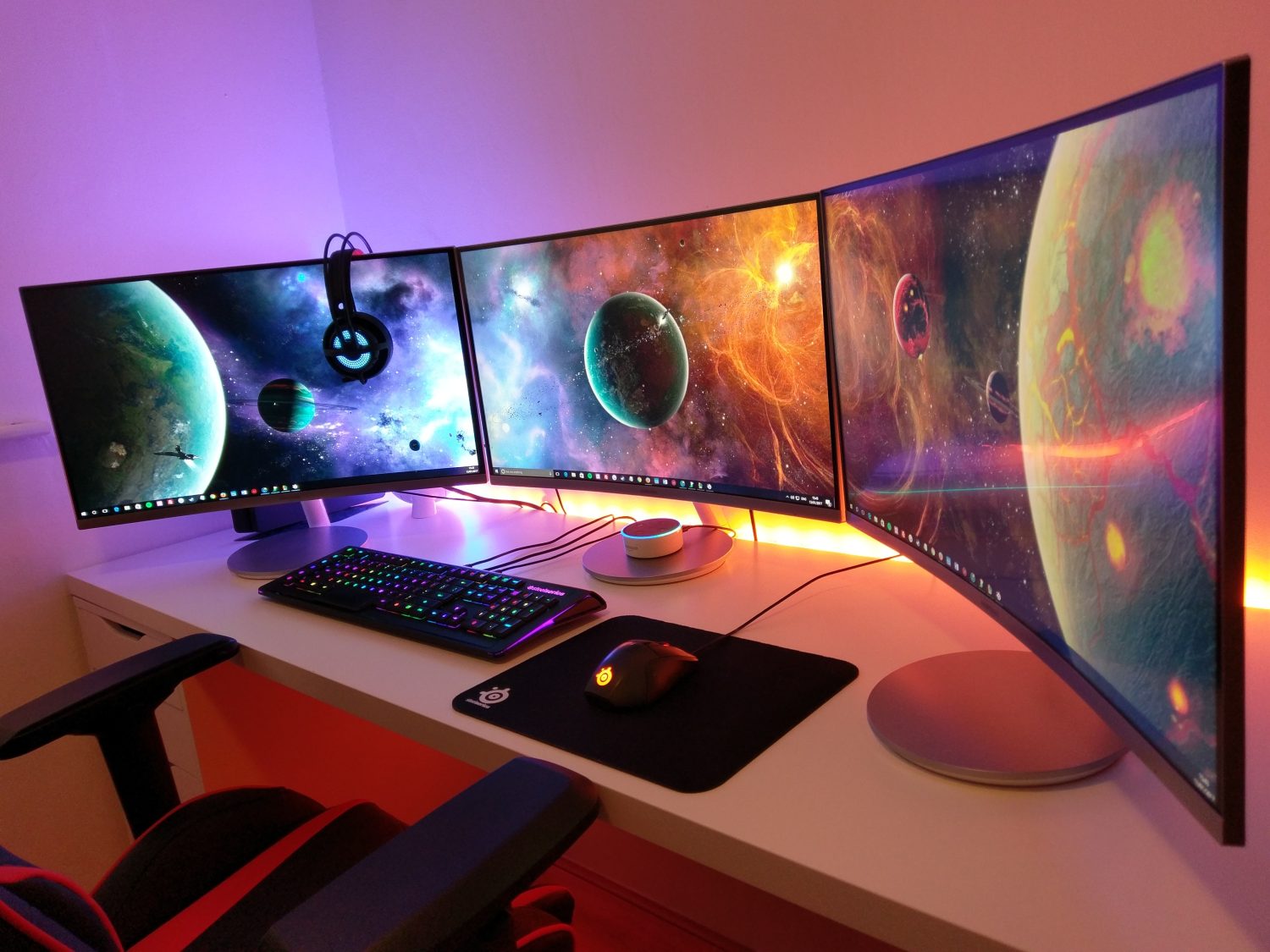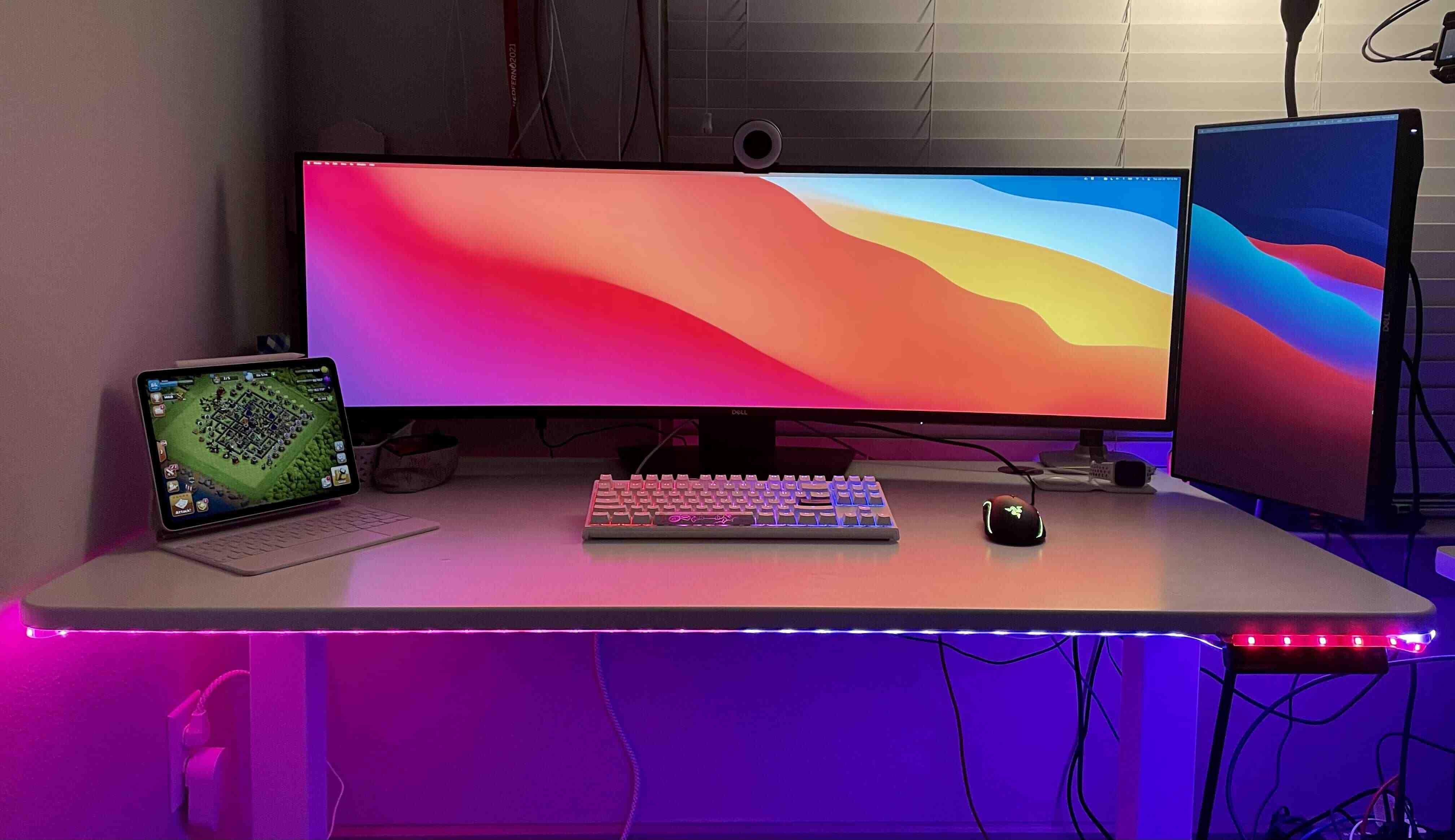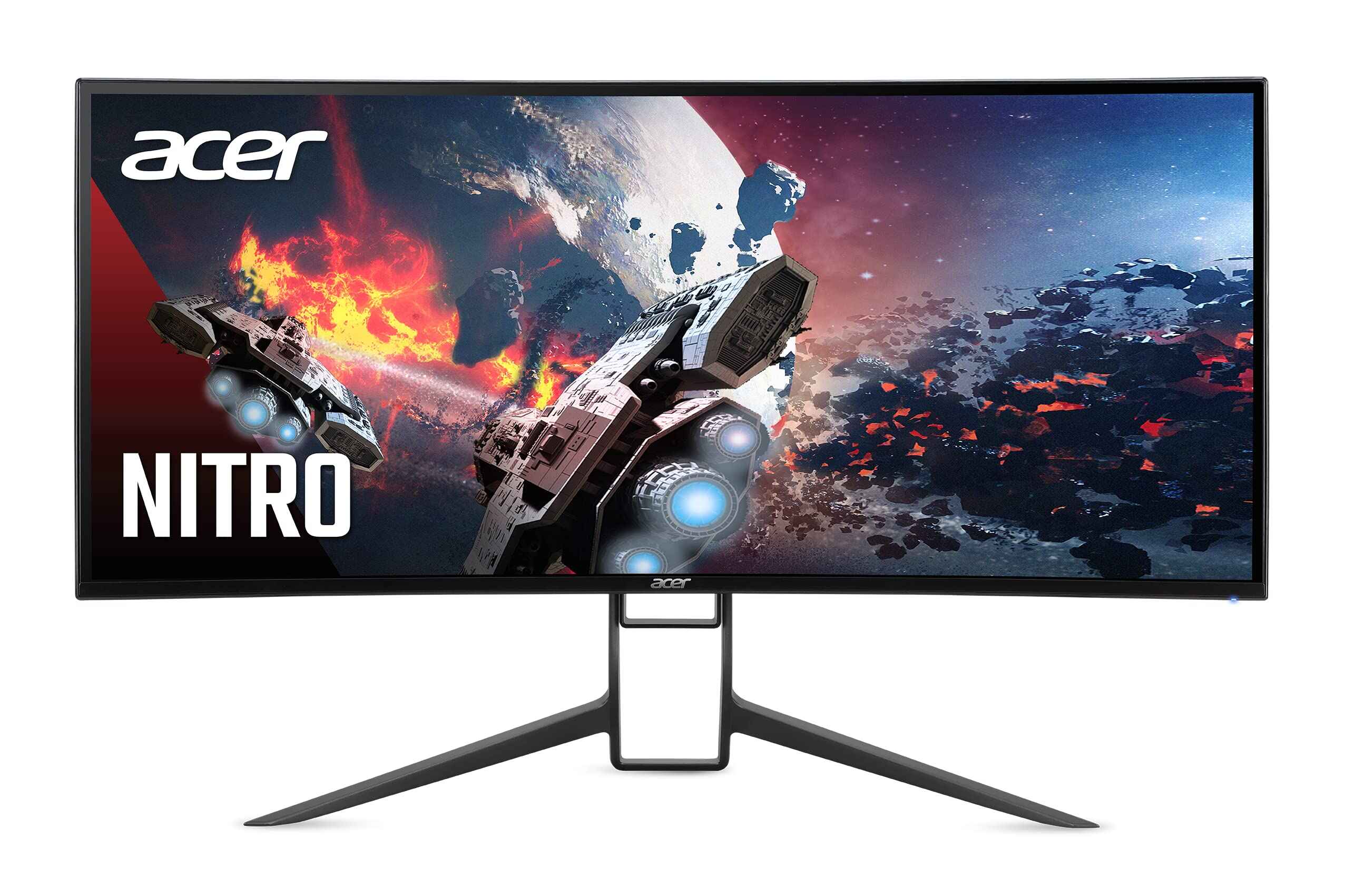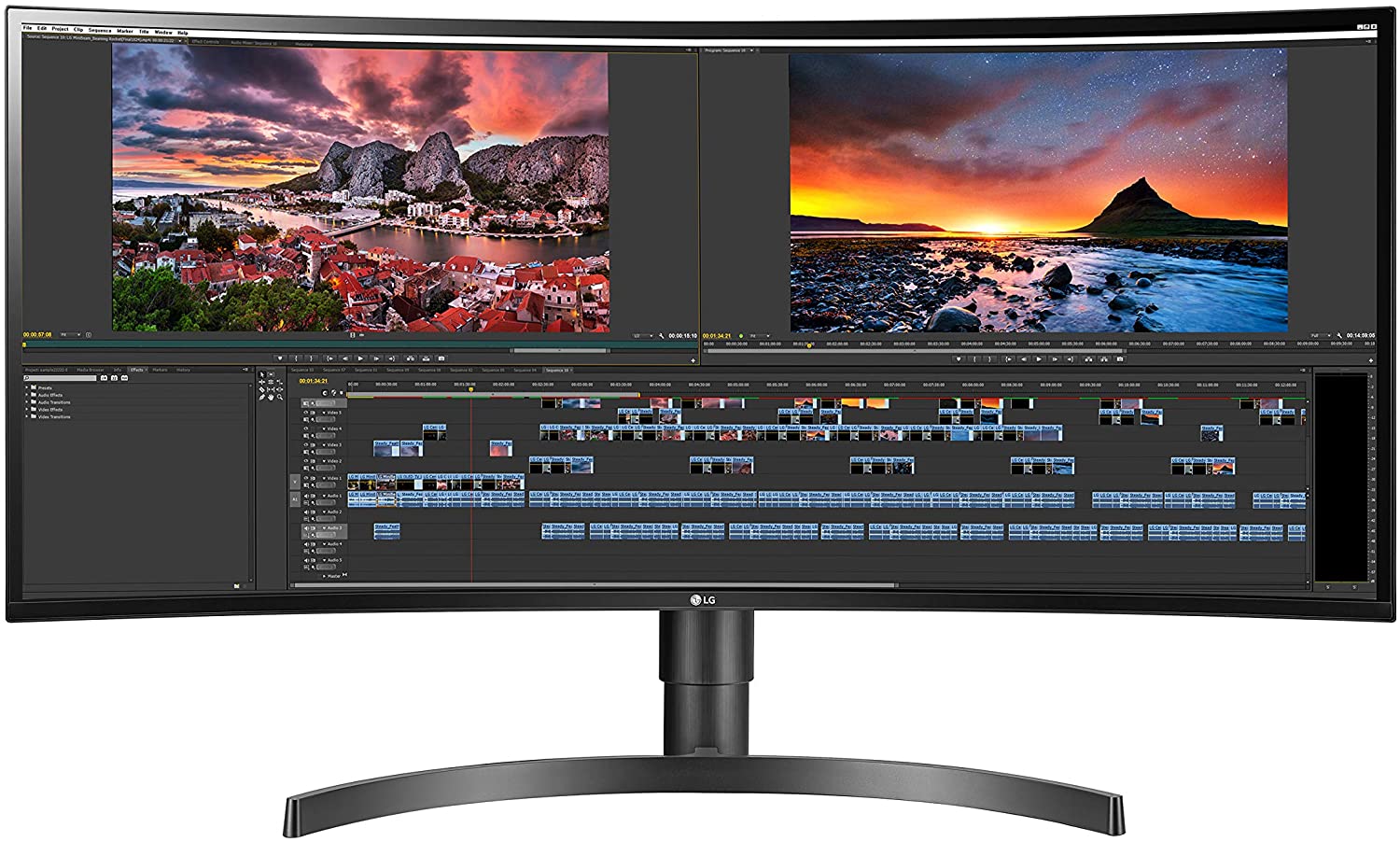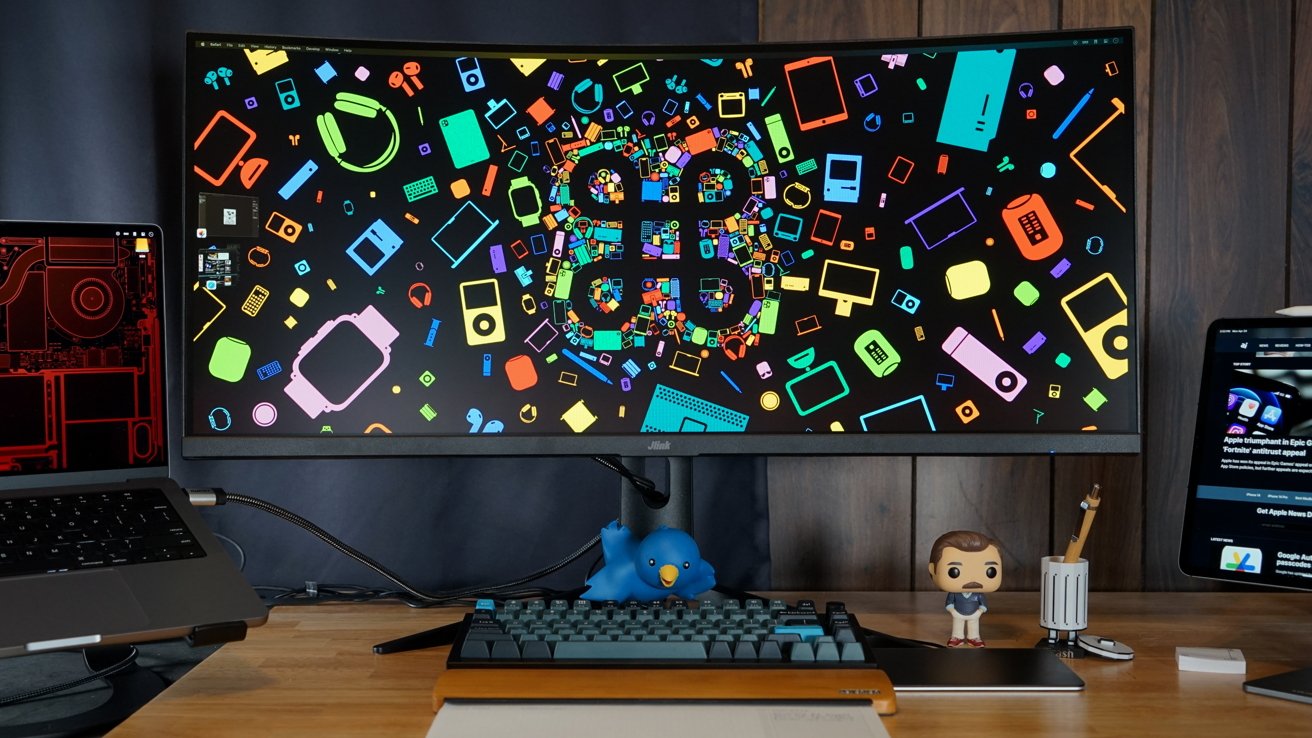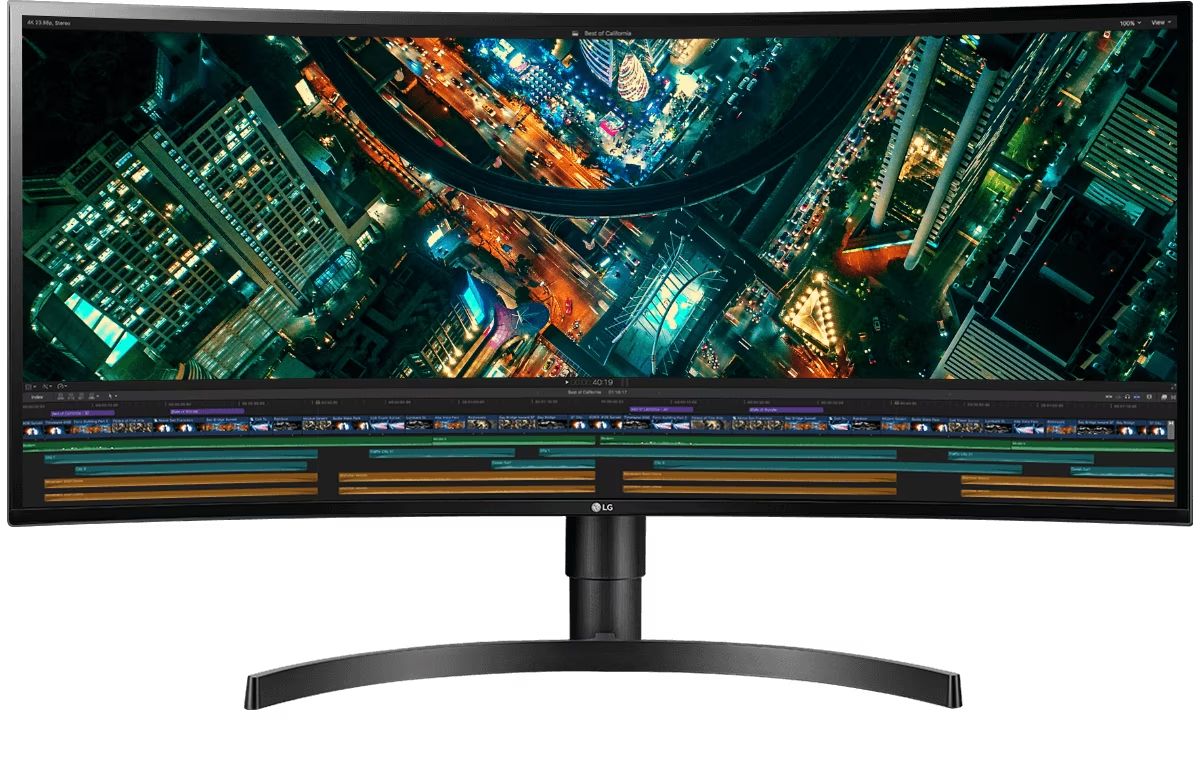Introduction
Welcome to the world of ultrawide monitors! These cutting-edge displays have gained immense popularity among gamers, designers, and professionals for their immersive visual experience and increased productivity. With their wider aspect ratios and expansive screen real estate, ultrawide monitors offer a whole new level of viewing pleasure and multitasking capabilities.
However, as with any technological device, it’s essential to consider the energy consumption of ultrawide monitors. As energy conservation becomes increasingly important in our daily lives, understanding the power requirements of these monitors can help us make informed decisions both for our wallets and the environment.
In this article, we will explore the energy consumption of ultrawide monitors and provide insights into how many watts they typically use during use. Additionally, we will discuss the factors that affect energy consumption and share some energy-saving tips to help you reduce power usage without compromising your viewing experience.
So, whether you’re considering purchasing an ultrawide monitor or simply curious about how much electricity they consume, continue reading to gain a better understanding of their power requirements and energy efficiency.
What is an Ultrawide Monitor?
An ultrawide monitor refers to a type of display that has an aspect ratio wider than the traditional 16:9 ratio found in most standard monitors. These monitors typically have an aspect ratio of 21:9, providing a much wider viewing experience. With a larger screen and extended horizontal space, ultrawide monitors offer a more immersive visual experience, allowing users to see more content at once.
Ultrawide monitors are especially popular among gamers, graphic designers, and professionals who require an expansive workspace. The wider aspect ratio provides a wider field of view, making it ideal for gaming enthusiasts who want a more immersive gaming experience. Designers and professionals can benefit from the increased screen real estate, as it allows them to work on multiple applications side by side, enhancing productivity and workflow efficiency.
These monitors come in various sizes, ranging from 29 inches to 49 inches, with larger sizes offering even more screen space for enhanced multitasking capabilities. Additionally, the ultrawide format enables users to enjoy a cinematic viewing experience when watching movies, as it closely matches the aspect ratio used in many films.
It’s worth noting that ultrawide monitors are different from dual monitor setups. While dual monitors do provide increased screen space, they often have a visible bezel between the two displays, which can be distracting. Ultrawide monitors, on the other hand, offer a seamless and uninterrupted viewing experience by eliminating the bezel between two screens.
Overall, ultrawide monitors offer a unique and immersive visual experience, making them a popular choice among those who value increased screen real estate and want to take their gaming, design, or professional work to the next level.
Energy Consumption of Ultrawide Monitors
When it comes to energy consumption, ultrawide monitors vary depending on their specific models, features, and usage patterns. Like any electronic device, they require power to operate, and understanding their energy requirements can help you make informed decisions regarding energy efficiency and sustainability.
Ultrawide monitors typically consume more power compared to standard monitors, primarily due to their larger screen size and higher resolution. The combination of a wider aspect ratio and increased pixel count requires more energy to deliver the vibrant and detailed visuals that these monitors are known for.
Furthermore, certain advanced features and technologies incorporated into ultrawide monitors can affect their energy consumption. For example, high refresh rate screens, adaptive sync technologies, and backlighting systems all contribute to increased power usage. While these features enhance the overall viewing experience, they also require more energy to operate.
It’s important to note that energy consumption can vary significantly among different models and brands of ultrawide monitors. Some monitors are designed with energy-saving features, such as automatic brightness adjustments or power-saving modes, which can help reduce power consumption during periods of inactivity or low screen brightness.
Additionally, the usage patterns and settings that you choose can also influence energy consumption. For instance, keeping the brightness level high, enabling high-performance mode, or frequently running demanding applications may lead to higher power usage. On the other hand, adjusting the brightness to an optimal level, utilizing power-saving settings, and turning off the monitor when not in use can help conserve energy.
To get a better idea of how much power a specific ultrawide monitor consumes, you can refer to the manufacturer’s specifications or energy labels, which often provide information on energy efficiency ratings, power consumption in different modes, and estimated annual energy usage.
By understanding the energy consumption of ultrawide monitors, you can make conscious decisions to optimize power usage, reduce your carbon footprint, and potentially save on electricity bills without compromising your viewing experience.
Factors Affecting Energy Consumption
Several factors can influence the energy consumption of ultrawide monitors. Understanding these factors can help you better manage the power usage of your monitor and make informed decisions to optimize energy efficiency. Let’s explore some of the key factors that can impact energy consumption:
- Screen Brightness: The brightness level of your ultrawide monitor has a direct impact on power consumption. Higher brightness settings require more energy to illuminate the screen, while lower brightness settings can help conserve power. Adjusting the brightness to a comfortable level that suits your needs can help minimize energy usage.
- Usage Patterns: How you use your ultrawide monitor can significantly affect its energy consumption. Running graphics-intensive applications, gaming, or streaming high-resolution content can put a higher demand on the monitor’s resources, resulting in increased power usage. Consider using the monitor for specific tasks or optimizing settings to reduce unnecessary power consumption.
- Advanced Features: Ultrawide monitors often come packed with various advanced features and technologies, such as high refresh rate displays, HDR (High Dynamic Range) support, and adaptive sync technologies like AMD FreeSync or NVIDIA G-Sync. While these features enhance the visual experience, they also require more power to operate. Enabling or disabling these features can impact energy consumption.
- Power Saving Modes: Many ultrawide monitors offer power-saving modes or eco-friendly features that reduce energy consumption. These modes typically adjust screen brightness, power output, or automatically put the monitor into standby or sleep mode after a period of inactivity. Utilizing these power-saving features can significantly reduce power usage while the monitor is idle.
- Size and Resolution: The physical size and resolution of an ultrawide monitor play a role in its energy consumption. Larger screens and higher resolutions require more power to render and display graphics. Consider the optimal screen size and resolution that suits your needs, as choosing a smaller or lower resolution monitor can help conserve energy.
By considering these factors and adjusting settings accordingly, you can effectively manage the energy consumption of your ultrawide monitor and contribute to a greener and more sustainable usage experience.
Average Power Consumption of Ultrawide Monitors
When it comes to determining the average power consumption of ultrawide monitors, it’s important to understand that power usage can vary based on several factors including monitor specifications, usage patterns, and settings. However, we can still provide a general estimate of the average power consumption for these monitors.
On average, ultrawide monitors with a screen size ranging from 29 to 34 inches typically consume between 30 to 75 watts during normal operation. However, power consumption can increase when running graphics-intensive applications or using advanced features such as high refresh rates or adaptive sync technologies.
Larger ultrawide monitors in the range of 35 to 49 inches tend to consume more power due to their larger screen size and higher resolutions. These monitors may have an average power consumption of around 50 to 100 watts during regular use.
It’s important to note that these are average estimates, and actual power consumption can vary among different brands and models of ultrawide monitors. It’s always recommended to refer to the manufacturer’s specifications or energy labels for accurate information on a specific monitor’s power consumption.
Additionally, power consumption can also be influenced by the settings you choose and the applications you run. For example, enabling a higher brightness level or running demanding video games can increase power usage, while adjusting brightness settings, utilizing power-saving modes, or reducing screen time can help conserve energy.
Using the monitor’s sleep mode or turning it off when not in use can further reduce power consumption, as the monitor goes into a power-saving state or completely shuts down, consuming minimal to no electricity.
It’s worth mentioning that advancements in display technology and energy-saving features have made many ultrawide monitors more efficient compared to older models. By keeping an eye out for monitors with energy-efficient certifications, such as ENERGY STAR, you can choose a model that meets higher energy efficiency standards.
Remember, these average power consumption values are estimates, and actual power usage can vary. It’s always recommended to refer to the manufacturer’s information and adjust your usage patterns and settings to optimize energy efficiency based on your needs.
How Many Watts Does an Ultrawide Monitor Use During Use?
The number of watts an ultrawide monitor uses during use can vary depending on several factors, including the specific model, screen size, resolution, features, brightness settings, and usage patterns. While it’s challenging to provide an exact number of watts for all ultrawide monitors, we can offer some general guidelines.
On average, a 29 to 34-inch ultrawide monitor typically consumes around 30 to 75 watts during normal operation. This range considers regular usage, which includes tasks such as web browsing, document editing, and watching videos. However, if you engage in activities that demand more graphical performance, like gaming or graphic design work, the power consumption may increase.
Larger ultrawide monitors with screen sizes ranging from 35 to 49 inches tend to consume more power due to their larger display area and higher resolutions. You can expect these monitors to use around 50 to 100 watts on average during regular use.
It’s important to note that these estimates are averages and can vary based on the specific model and brand of the ultrawide monitor. To obtain more accurate information about a particular monitor’s power consumption, it is recommended to refer to the manufacturer’s specifications or energy labels.
While the power usage may vary, there are steps you can take to manage and reduce energy consumption. Adjusting the brightness level to a comfortable and energy-efficient setting can significantly impact power usage. Additionally, utilizing power-saving features, such as automatic sleep mode or power-off timers, can reduce energy consumption during periods of inactivity.
It’s worth mentioning that advancements in display technology and energy-saving features have made many ultrawide monitors more efficient compared to older models. Look out for monitors with energy-efficient certifications, such as ENERGY STAR, which indicate compliance with higher energy conservation standards.
Ultimately, the power consumption of an ultrawide monitor will depend on various factors, and it’s important to balance your desired viewing experience with energy efficiency. By being conscious of your usage patterns and adjusting settings accordingly, you can manage and optimize the power usage of your ultrawide monitor.
Energy Saving Tips for Ultrawide Monitors
While ultrawide monitors offer immersive visuals and increased productivity, they can also consume more power compared to standard monitors. However, there are several energy-saving tips you can implement to reduce the power consumption of your ultrawide monitor without compromising your viewing experience:
- Adjust Brightness: One of the most effective ways to save energy is by adjusting the brightness level of your ultrawide monitor. Lowering the brightness to a comfortable level can significantly reduce power consumption.
- Utilize Sleep Mode: Take advantage of the sleep mode or power-saving features on your monitor. These modes automatically put the monitor into standby or sleep mode after a period of inactivity, conserving energy.
- Turn Off When Not in Use: If you’re not using your ultrawide monitor for an extended period, it’s best to turn it off completely. This ensures no power is being consumed unnecessarily.
- Enable Power-Saving Settings: Many ultrawide monitors come with power-saving options or eco-friendly settings. Enable these features to reduce energy consumption during periods of low activity or when running on battery power.
- Optimize Screen Time: Reducing screen time can help conserve energy. Avoid leaving your monitor on when not needed and consider incorporating screen breaks or time limits into your usage habits.
- Use Energy-Efficient Certifications: Look for ultrawide monitors with energy-efficient certifications, such as ENERGY STAR. These monitors are designed to meet strict energy conservation standards.
- Manage Background Applications: Close unnecessary applications running in the background, as they may contribute to increased power consumption. Running fewer processes can help reduce energy usage.
- Regularly Update Drivers and Firmware: Ensuring that your monitor’s drivers and firmware are up to date can improve energy efficiency. Manufacturers often release updates that optimize performance and energy usage.
- Consider Power Strips: Connect your ultrawide monitor to a power strip with an on/off switch. This allows you to easily turn off the strip and cut off power supply to the monitor when not in use.
- Evaluate Power-Saving Modes: Examine the various power-saving modes available on your ultrawide monitor. Some models may have different settings or customizable options. Experiment with these modes to find the balance between energy savings and performance that works for you.
By implementing these energy-saving tips, you can effectively reduce the power consumption of your ultrawide monitor, minimize your environmental impact, and potentially save on electricity costs.
Conclusion
Ultrawide monitors offer a captivating and immersive visual experience, but it’s important to consider their energy consumption and take steps to optimize energy efficiency. By understanding the factors that affect energy consumption, such as screen brightness, usage patterns, and advanced features, you can make informed choices to minimize power usage.
On average, ultrawide monitors consume more power compared to standard monitors due to their larger screen size and higher resolutions. However, power consumption can vary among different models and brands. It’s advisable to refer to the manufacturer’s specifications or energy labels for accurate information on a specific monitor’s power consumption.
To reduce energy consumption, consider adjusting the brightness level, utilizing sleep mode or power-saving features, and turning off the monitor when not in use. Additionally, optimizing your usage patterns, managing background applications, and enabling power-saving settings can help conserve energy without compromising your viewing experience.
Look for ultrawide monitors with energy-efficient certifications, such as ENERGY STAR, as they meet higher energy conservation standards. Regularly updating drivers and firmware can also improve energy efficiency.
By implementing these energy-saving tips and making conscious choices, you can contribute to a greener and more sustainable usage of your ultrawide monitor. Remember, every small effort counts when it comes to conserving energy and reducing our environmental impact.
So, enjoy the immersive visuals of your ultrawide monitor while being mindful of its energy consumption, and make a positive difference for both your wallet and the planet.










